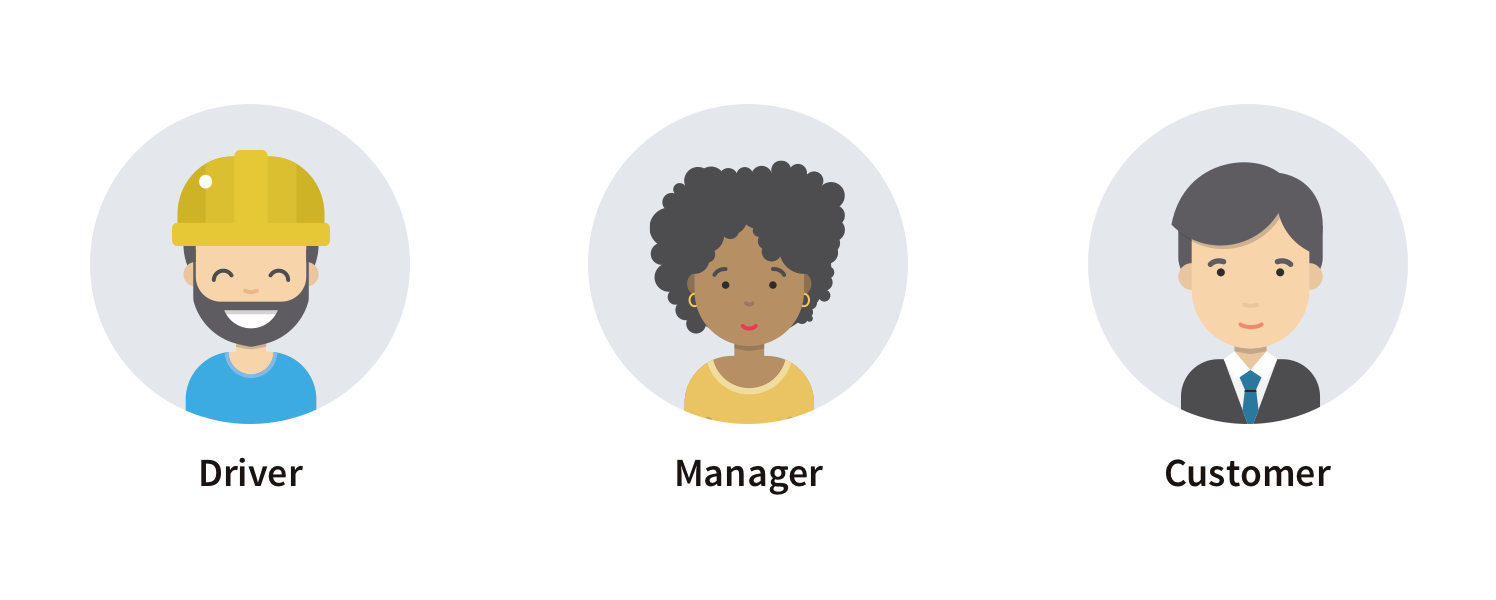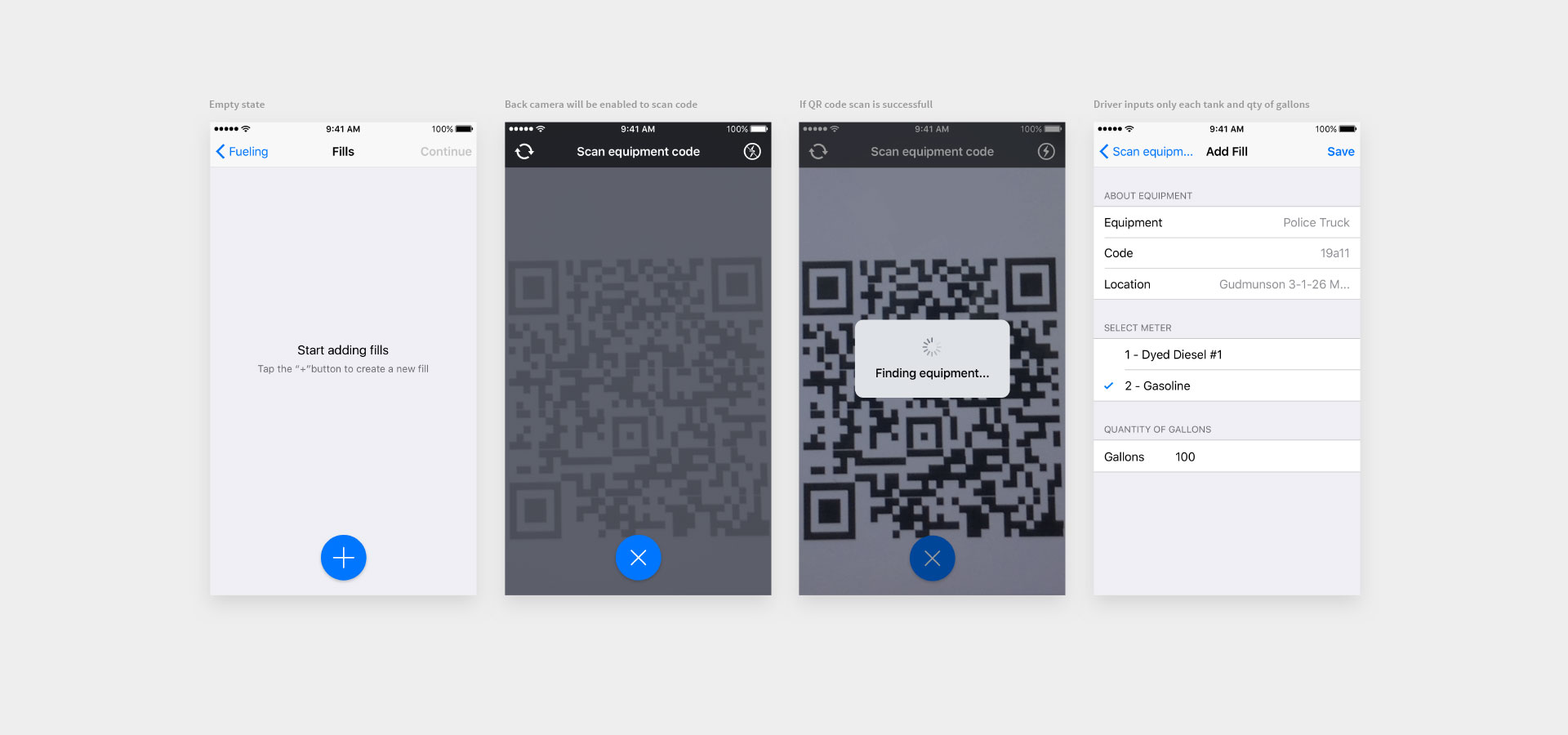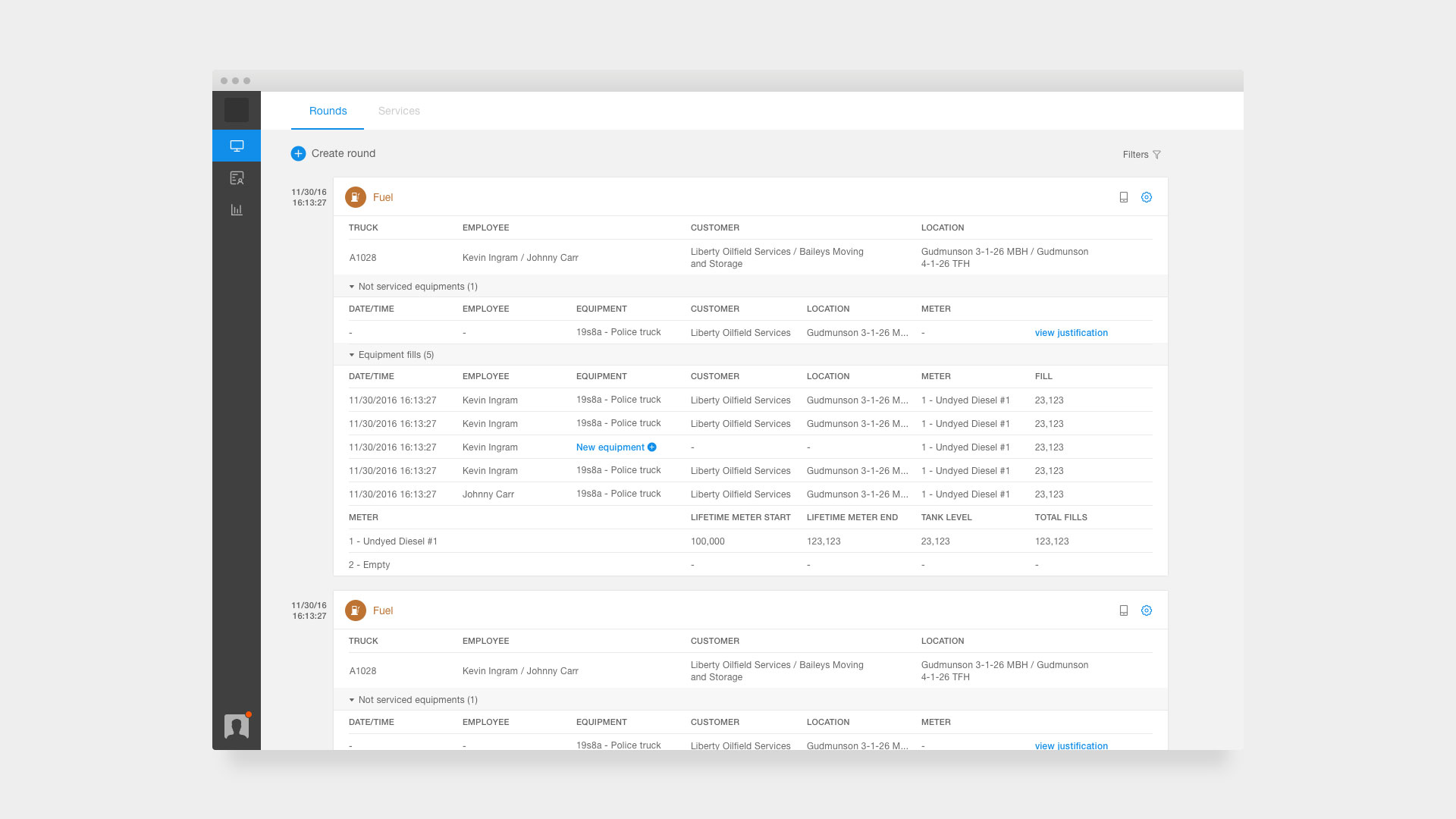
Where am I?
Creating solutions that move us forward
In order to facilitate the complex process of monitoring the work of the bulk fuel delivery companies, there is the Rolfson Services software.
In October 2016, I was part of a multitask team created to develop a product strategy and, following that, to build a MVP that was supposed to be tested and measured with the target audience.
In October 2016, I was part of a multitask team created to develop a product strategy and, following that, to build a MVP that was supposed to be tested and measured with the target audience.
My role
I acted as a UX designer and shared the creation of the spec with the product manager. It was important for us to be sure that all team members were within the scope.
I also had a deep participation in wireframes, mockups and front-end development (html+css).
I also had a deep participation in wireframes, mockups and front-end development (html+css).
Problem
To concentrate all the information regarding the fuelling of the clients equipment’s. These companies have a workflow that depends a lot on the truck drivers’ proactivity.
Safety, the transport itself, the maintenance of equipment and being the bridge between third part companies and the final customer. The diversity of drivers responsibilities was our main issue.
Safety, the transport itself, the maintenance of equipment and being the bridge between third part companies and the final customer. The diversity of drivers responsibilities was our main issue.

From that observation came the need of creating a way to automate the bureaucratic part of the truck driver’s job, by using an iOS app.
By doing that, all of the strategic data produced could be easily controlled by the company managers, helping to raise the employees's productivity, reduce resource wasting and also significantly improve the intern communication and company-customer transparency.
By doing that, all of the strategic data produced could be easily controlled by the company managers, helping to raise the employees's productivity, reduce resource wasting and also significantly improve the intern communication and company-customer transparency.
Limitations
Remote: We had to keep 3 different teams on the loop of information and knowledge
Investor: On previous projects we had problems on keeping different expectations about the product, so in this product we tried to keep our investor part of the process.
Investor: On previous projects we had problems on keeping different expectations about the product, so in this product we tried to keep our investor part of the process.
Audience
Rolfson Services is a specific product for teams that deal directly with third part equipment fuelling. Companies that own trucks and attend to oil extraction stations were the foundation of our initial research area.

Solution
The project started with a user research, by pointing out characteristics of the software’s personas: drivers, managers and customers.
After that phase, we drew the software’s ecosystem including a mobile app for drivers and a web version that covers clients and managers.
With the definition of the spec, we went to the first round of low-fidelity prototyping.
With the definition of the spec, we went to the first round of low-fidelity prototyping.

As we had a small development team, we decided to start with the framework of front end Ant Design and ReactJS, which gave us an opportunity to go from wireframes to software production.

Conclusion
In this project not only I’ve faced all the challenges of user’s study and prototyping, but I was also the responsible for the Front End (html+css) coding quality. This approach was new to my work as a designer and gave our team a great agility by not needing to send out a backlog of minimum visual adjusts every time as I was doing the adjusts myself.
Thanks to that MVP I’ve learned how to use the GIT.
The project also served to improve the communication between investors and our production team. By sharing the design process and including the investor in the researches and prototyping, we were able to align the business expectations with our own expectations about technology and user experience.
It is always a good time to learn.
Thanks to that MVP I’ve learned how to use the GIT.
The project also served to improve the communication between investors and our production team. By sharing the design process and including the investor in the researches and prototyping, we were able to align the business expectations with our own expectations about technology and user experience.
It is always a good time to learn.